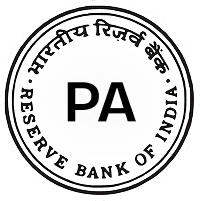Introduction
In the Indian financial system, cooperative banks are the major instruments for providing financial inclusion, particularly in rural and semi-urban areas. These banks are unique in the sense that they are owned by their members, run locally, and are established to serve member interests rather than profit-making.
Cooperative banks, even with the coming of the private and government banking systems, continue to serve millions by providing affordable credit and simpler banking services. So, what is a cooperative bank, and what distinguishes one from the rest? Let’s explore in this blog.
What Is Cooperative Banking?
The banking system, known as cooperative banking, is where banks operate under membership; the members themselves are the customers. Based on principles of cooperation, democratic governance, and service to the community, cooperative banks tend to prioritize social welfare over profit. While commercial banks put their services to the public in the eyes of profit maximization, cooperative banks go to support their members with accessible and affordable financial services. So, what are cooperative banks in practical terms? They are financial institutions offering banking services such as savings accounts, loans, or credit to their members, chiefly within a small community or geographic territory. Cooperative banking in India formally took shape in the early 20th century with the passing of the Co-operative Societies Act in 1904, although some cooperative credit societies had begun functioning in the late 19th century. Its founding signifies a chapter in the history of financial inclusion for small farmers, artisans, and traders striving for commercial bank services.
Through the years, cooperative banks have been truly instrumental in strengthening the local economies by addressing those sectors that commercial banks leave behind. When we discuss what is cooperative bank is in India, it becomes necessary to emphasize that these banks are under dual regulation: the Reserve Bank of India (for banking functions) and the State Cooperative Societies Acts (for management and governance). In the case of rural cooperative banks, NABARD also plays a key supervisory role. This makes sure that they operate within a legal framework that ensures the benefit of the members and transparent governance.
Nowadays, cooperative banks exist in both rural and urban areas and provide financial services to members attuned to the varied needs of members in different areas. With a localization model of operation, the banks remain close to local communities, thus acting as financial partners for numerous individuals and small enterprises. Thus, cooperative banking remains an important aspect of the Indian financial system in promoting economic participation, developing grassroots-enabled development, and opening rudimentary banking services even to backward sections of society.
How Does Cooperative Banking Work? Understanding the Structure
Ever wondered how cooperative banks operate? The most basic working principle under cooperative banking is democracy, or one member, one vote, whereby no member has disproportionate influence based on the amount of capital they contribute to the society. This system provides for transparency and collective ownership of the bank, with each member guiding the bank in the formation of policies and its ultimate direction. These banks mostly raise funds from capital and deposits from their members and employ these resources in granting loans and giving financial aid to the community.
Contrary to commercial banks, cooperative banks are institutions where the interest lies in mutual help and service, unlike commercial banks that have profits as their primary objective. So, grasping the structure of cooperative banks in India is very important for understanding their functioning.
The rural cooperative credit system in India is mainly structured in two ways:
- Short-term credit cooperatives follow a three-tier structure (Primary Agricultural Credit Societies → District Central Cooperative Banks → State Cooperative Banks).
- Long-term credit cooperatives follow a two-tier structure (State Cooperative Agriculture and Rural Development Banks → Primary Cooperative Agriculture and Rural Development Banks).
Types of Cooperative Banks: Urban vs Rural Models
In India, Cooperative Banks are broadly classified into two categories, viz., urban and rural, depending on their target clientele and area of operation. Both are supposed to be vehicles for delivering inclusive financial services, but they serve different segments of customers.
Urban Cooperative Banks (UCBs)
An urban cooperative bank operates in metropolitan cities and suburban areas. Its clients are salaried individuals, small traders, retail businesses, and professionals. The UCBs provide credit facilities, accept deposits, and conduct many other financial operations for their customers, who are mostly urban middle-class households and small-scale industries. They comply with the regulatory guidelines of the
Reserve Bank of India, while its management aspects are also governed under the respective State Cooperative Societies Acts. Most of the urban cooperative banks have gone digital for smooth service delivery and greater convenience to their customers.
Rural Cooperative Banks
In general, the rural cooperative banks finance village-level people so that they can meet their financial demands. Due to the absence of an appropriate formal banking infrastructure, they finance agriculture, cottage industries, and rural entrepreneurs. Therefore, these banks are an important construction building block of rural development, by granting credit for the purchase of agricultural inputs, livestock, and irrigation or rural housing, thus being apt for an Indian agrarian economy.
Central Cooperative Banks
The central cooperative bank functions at the district level, acting as an intermediate between the primary cooperative societies at the village level and the state cooperative bank at the highest level. Redistribution of credit, maintenance of liquidity among rural cooperatives, and supervision to ensure smooth functioning of the entire network are its chief functions. Thus, they are the bloodline that ensures financial services reach into the remotest corners.
Key Functions of Cooperative Banks in India’s Economy
Cooperative banking institutions perform a wide variety of functions that directly and indirectly affect the country’s financial and economic setup, particularly at the grassroots level.
Provide Agricultural and Rural Credit
Cooperative banks provide working capital loans either for short-term or medium-term periods to farmers and rural borrowers for their essential farming needs, such as seeds, fertilizers, machinery, etc., thereby aiding the agricultural cycle promptly.
Offer Savings and Deposit Facilities
These banks primarily offer savings accounts, fixed deposits, and recurring deposit facilities to their members, though many urban cooperative banks also extend deposit services to non-members. Thus, it creates an environment in which people are encouraged to remain financially disciplined and promotes a saving culture, especially among the less privileged.
Support Self-Employed Persons and Small Businesses
Indirectly, cooperative banks support and promote self-help groups (SHGs), small-scale industries, and micro-businesses in urban and rural areas. Working capital, business loans, and grants to promote entrepreneurship are provided to these entities.
Promote Financial Inclusion
By providing banking services to those who have been somewhat neglected by the larger financial institutions, cooperative banks work to reduce disparities in financial access. When one finds themselves asking what a cooperative bank is in India, the answer transcends banking—it is a channel through which communities are empowered and financial equality is brought to the underserved regions in general.
Advantages of Cooperative Banks to Individuals and Businesses
Due to accessible, affordable, and community-oriented services, cooperative banks in India have staked a claim for themselves. On the principle of inclusiveness, cooperative banks form the major constituent part of banking, especially for those who may not have access to traditional financial institutions. Some key benefits of the cooperative banking system to individuals, small entities, and communities are:
Lower Interest Rates on Loans
One of the greatest advantages of cooperative banks is the low rate of interest charged on loans. Cooperative banks go against the profit-making motive; therefore, they issue loans at competitive rates of interest. This goes a long way to help small farmers, small traders, and self-employed persons who often find themselves at the receiving end of either high-interest rates charged by commercial banks or exorbitant rates by informal lenders.
Personalized Service and Stronger Customer Relationships
Cooperative banks have always maintained strong ties with the communities they serve. Being situated and operating in smaller, defined areas where member-customers are served implies that services are rendered more personalized. Customers or members have stronger relationships with staff and decision-makers than ordinary clients in commercial banks, making banking more personalized and responsive to individual needs.
Access to Remote and Underserved Areas
One of the major advantages of cooperative banking is that its branches are widely spread across rural and semi-urban areas. These banks operate in areas where large commercial banks usually do not maintain physical presence. This access to remote areas renders basic financial services to people who are either low on income or mobility, thereby aiding in financial inclusion and economic empowerment.
Aid for Small Local Businesses, Farmers, and Micro Businesses
Cooperative banks are the main engine for local economic development. They provide finance and lend to small-scale industries, local shops, cottage industries, and farming communities. Focusing on regional needs, cooperative banks encourage entrepreneurship, generate employment, and foster business growth for micro-enterprises.
Community-Oriented and Inclusive Banking Facility
Unlike larger commercial banks, cooperative banks operate as member-centered institutions. This implies that profits go either into reinvestment in the organization or into dividends for members. Being community-driven, it is centered around decisions that are taken in towns or villages for local welfare as opposed to purely financial gains. These characteristics make cooperative banks suitable tools for reducing economic inequalities and providing equitable access to credit.
Disadvantages of Cooperative Banks: Some Reality Checks
While there is a plethora of advantages, cooperative banks are not without their disadvantages, some of which can affect their operational efficiency and reliability. To see the whole picture, it is important to know the pitfalls that sometimes hamper cooperative banks from performing optimally in today’s dynamic financial environment.
Limited Capital and Funding
Cooperative banks mostly operate with capital constraints, so they might have an issue with raising funds for large loans or for broadening operations of services. They largely depend on member deposits, placing them far away from broader investment avenues. They may be limited in catering to the funding needs of the bigger business or infrastructure projects.
Lack of Advanced Banking Technology
Many cooperative banks across the country are still operating on what can be called antiquated banking systems. While some bigger urban cooperative banks were in the process of digitizing their work, many rural branches are still far behind technologically. This works against their efficiency, scalability, and appeal to young and tech-savvy customers who want an online banking or mobile-app interface from their bank.
Political Interference in Operations
A really old, established issue with some cooperative banks has always been political interference in their governance and decision-making. Such interference may result in unqualified people being appointed to the boards, funds being misused, or the interests of a political party being placed above customer interests. These activities affect the credibility of these institutions and cast a shadow over them.
Governance and Transparency Issues
Certain cooperative banks in some areas have governance issues largely owing to less oversight, audit processes, and internal controls. Impropriety or incongenial risk management, coupled with a lack of transparency, may lead to the downfall of cooperative banks, leading to instances of financial instability. In consequence, if these matters are not taken care of, the problem may lead to incurring sanctions or outright collapses of some of these smaller banks.
Even with these challenges, cooperative banks form a vital pillar of the financial ecosystem in India. Their strength remains in the deep connection with the local community, and, with improved governance, modern technology, and capital reforms, they can further prosper.
Cooperative Banks vs Government Banks: Key Differences Explained
Let’s look at the difference between cooperative banks and government banks.
Features |
Cooperative Banks |
Government Banks |
|---|---|---|
Ownership Structure |
The members collectively own these banks. |
They are majority-owned and run by the Government of India. |
Regulating Bodies |
Monitored by the RBI along with state government authorities. |
Under the supervision of the RBI, along with the central government. |
Coverage Area |
They generally operate within a small region or society. |
Operates on a national scale with branches across the country. |
Clients |
Small businesses, farmers, and residents. |
Individuals, businesses, farmers, and large industries. |
Profit Sharing |
Earnings are shared among members or reinvested in community programs. |
Profits are kept and retained by the government or returned to the government. |
Conclusion
In closing, cooperative banking still remains a pillar of the grassroots level in the financial empowerment of India. These cooperative banks, in essence, support small businesses in accessing loans or assist farmers during seasonal hardships, thereby drawing a bridge between the formal financial sector and local requirements. With a sturdy base, humanistic outlook, and involvement of the community, these institutions, although wracked with problems, continue to form an integral part of the banking structure in India.












